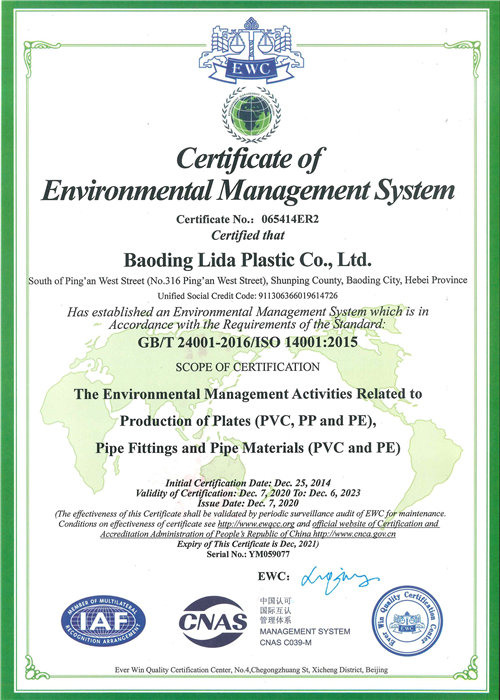Oct . 30, 2024 11:53 Back to list
waste pipe fittings
Understanding Waste Pipe Fittings A Crucial Component in Plumbing Systems
Waste pipe fittings play a vital role in plumbing systems, serving as the backbone for effective waste disposal in residential and commercial buildings. Designed to transport wastewater from sinks, toilets, and other fixtures to the sewer or septic system, the right choice of waste pipe fittings can significantly impact the performance and longevity of plumbing systems.
Types of Waste Pipe Fittings
Waste pipe fittings come in various types, each tailored to specific functions within the plumbing infrastructure. Some of the most common fittings include
1. Elbows These fittings allow pipes to change direction, typically at angles of 45 or 90 degrees. They are essential in navigating plumbing layouts around obstacles and connecting different sections of piping.
2. Tees Tee fittings are used to create branching points in the plumbing system. They facilitate connections between the main waste pipe and secondary lines, directing flow effectively without creating blockages.
3. Couplings and Adapters These fittings connect two pipes of the same or different diameters, ensuring a seamless link in the system. Couplings are usually straight, whereas adapters may allow for size transitions between different pipe materials or diameters.
4. P-Traps Crucial for preventing sewer gases from entering a building, P-traps hold a small amount of water, creating a seal that blocks these gases. They are typically located beneath sinks and are vital in maintaining air quality and hygiene.
5. Cleanouts These fittings provide access points within the waste pipe system, allowing for easy cleaning and maintenance. Typically installed at strategic locations, cleanouts help prevent buildup and clogs from becoming severe issues.
waste pipe fittings

Material Choices
Waste pipe fittings are available in various materials, each offering distinct advantages. Common materials include
- PVC (Polyvinyl Chloride) Widely used for its lightweight and corrosion-resistant properties, PVC is suitable for a range of waste applications. It is easy to install and offers excellent longevity.
- ABS (Acrylonitrile Butadiene Styrene) Similar to PVC but more robust at low temperatures, ABS is often used in colder climates. It is also lightweight and resistant to chemicals.
- Cast Iron Known for its durability and sound-deadening properties, cast iron fittings are often used in larger plumbing systems, particularly in commercial applications.
- Copper While less common for waste piping, copper is still used in some plumbing systems, particularly for vents. It offers excellent antimicrobial properties but can be expensive compared to plastic alternatives.
Installation and Maintenance
Proper installation of waste pipe fittings is crucial to prevent leaks and ensure optimal flow. It is recommended to consult a plumbing professional to guarantee that all connections are secure and systems are calibrated correctly. Regular maintenance, including checking for leaks and blockages, is essential for prolonging the life of a plumbing system.
In conclusion, waste pipe fittings are essential components of any plumbing system, ensuring the effective and safe disposal of wastewater. By understanding the types, materials, and maintenance needs of these fittings, homeowners and builders can make informed decisions that enhance the functionality and resilience of their plumbing systems. Investing in quality waste pipe fittings not only promotes efficiency but also contributes to the overall health and sustainability of plumbing infrastructures.
-
Durable PP Rigid Sheet: Lightweight, Chemical Resistant Solutions
NewsAug.21,2025
-
PVC Grey Sheet for Extraction: Chemical Resistant & Durable
NewsAug.19,2025
-
Durable PVC Pipe Fittings for Plumbing & Irrigation Needs
NewsAug.18,2025
-
HDPE Steel Belt Reinforced Spiral Corrugated Pipe | High Strength
NewsAug.17,2025
-
HDPE Pipe Fittings: Durable, Leak-Proof Solutions
NewsAug.16,2025
-
Premium CPVC Sheet: High-Temp & Chemical Resistant Solutions
NewsAug.15,2025

